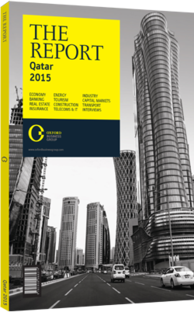Turki Mohamed Al Khater, Chairman and Managing Director, United Development Company: Interview

Interview: Turki Mohamed Al Khater
Given the ongoing growth in the expatriate labour force, to what extent have developers shifted from selling properties to leasing them?
TURKI MOHAMMED AL KHATER: The combination of rapid population growth and higher GDP per capita has resulted in strong demand for housing, pushing up both real estate sales and rental prices. The demand for residential properties is focused around the Diplomatic District, the West Bay area and The Pearl–Qatar (TPQ). In the first half of 2014 alone, 140,000 expatriates arrived in Qatar, and this trend is likely to continue its upward climb. Consequently, demand for medium- to long-term leasing of residential properties is expected to sour, providing developers with opportunities for greater returns in the property-leasing segment over the coming years.
How much of a concern are rising land prices? To what extent will this trend push up rents for housing, offices and retail spaces?
AL KHATER: In its latest real estate report, QNB Group reported that land prices have climbed 52.7% since the beginning of 2014. We think that this will lead to a moderate rise in domestic inflation in the next two years. The cost of land is the fundamental driver for property rental inflation. When land prices rise, rents for villas, apartments and office space normally go up to recoup the overall cost to landlords, albeit with a lag. Land prices have been rising rapidly since March 2014, following a lull during the previous eight months, and we expect they will continue to affect rental prices.
With the government allocating significant funds to infrastructure development, what effect will this have on the private sector?
AL KHATER: The real estate sector has become one of the fastest growing sectors in Qatar ahead of the 2022 FIFA World Cup. There has been an increase in public spending on infrastructure development, with the government allocating a considerable share of its budget towards funding new transport facilities, road networks and other projects that will provide long-term benefits for Qatar. These developments are seen to be key drivers of real estate growth, and it is hoped that the increased passenger capacity created by the inauguration of the Hamad International Airport and the increasing job opportunities related to preparations for 2022 will help the private sector to benefit from the construction of new and adequate residential, commercial and hospitality properties.
While Qatar’s diversification strategy goes beyond the World Cup and even beyond Qatar National Vision 2030, there is a noticeable drive from both the public and private sectors to create world-class facilities in the short term that can ultimately cater to the influx of visitors. However, it is important to avoid putting too much reliance on real estate projects that cater to the World Cup exclusively, without taking into account longer-term goals. Sustainability is key to maintaining future demand, which will keep the property market from taking a serious dip after the tournament is over.
Is there an argument for the government to open up freehold investment? What lessons can be learnt in this regard from projects such as TPQ?
AL KHATER: With residential sales at TPQ dominating the freehold market, and sale/re-sale activity continuing to expand, opening up freehold investment becomes duly justified. The enhanced sales activity and greater optimism from potential investors has further been encouraged by the improved finance rates being offered by local banks and by TPQ becoming an established and successful residential location with greater certainty on occupational costs and improving rental returns. Opening up freehold investment in Qatar may be worth considering to address population growth and the future of real estate demand, which is now geared towards individual ownership. We will be pleased if the government draws upon the experience of TPQ to create freehold investment laws and regulatory mechanisms that will extend this privilege to more projects.
You have reached the limit of premium articles you can view for free.
Choose from the options below to purchase print or digital editions of our Reports. You can also purchase a website subscription giving you unlimited access to all of our Reports online for 12 months.
If you have already purchased this Report or have a website subscription, please login to continue.

